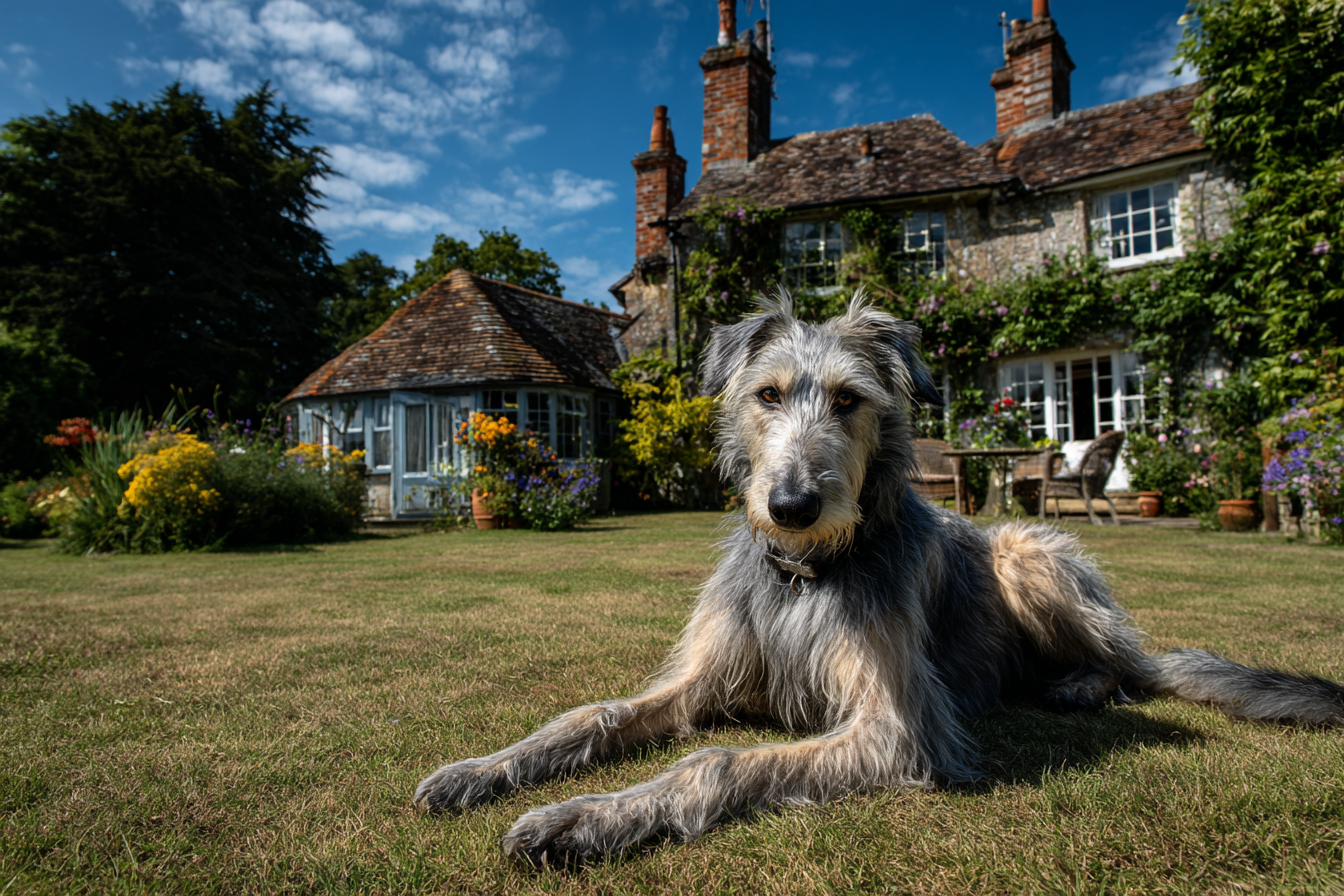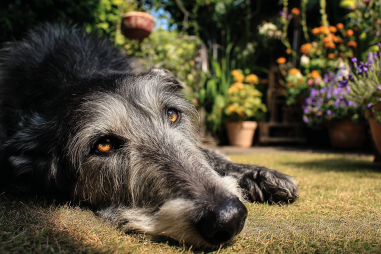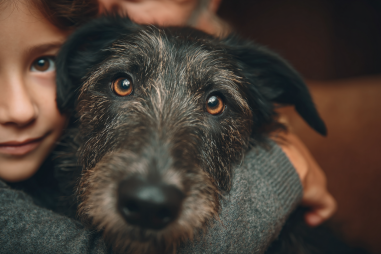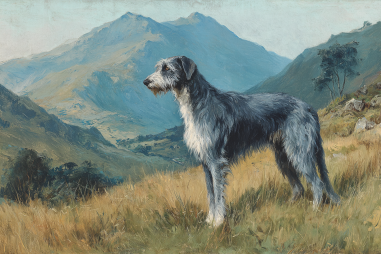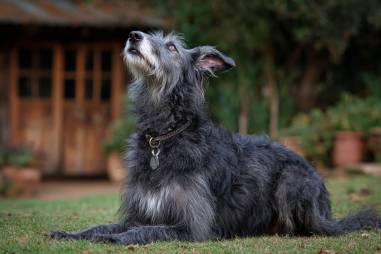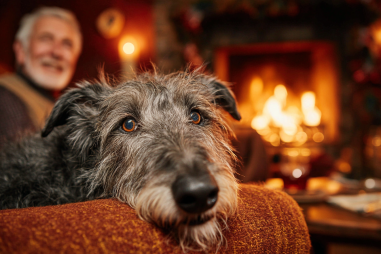When welcoming a Scottish Deerhound into your life, one of the essential considerations is providing a living environment where this majestic and gentle giant can truly thrive. Known for their elegance, size, and calm temperament, Scottish Deerhounds have specific needs that make their ideal home quite unique compared to many other breeds. Whether you live in a spacious house with ample yard space or are considering adapting to an urban setting, understanding the best living conditions for your Deerhound will help ensure a happy, healthy, and well-adjusted companion.
Ideal Home Size and Space
Scottish Deerhounds are large dogs, often standing between 28 to 32 inches tall at the shoulder and weighing anywhere from 75 to 110 pounds. Due to their size, they require more space than smaller breeds to move comfortably. Ideally, these dogs are best suited to homes with ample indoor space and access to a securely fenced yard where they can stretch their long legs and explore. Cramped apartments or small homes often do not provide the freedom of movement a Deerhound needs.
Indoor living with plenty of room to lounge, stretch, and walk around is crucial. A spacious living room or open floor plan is preferred, where the dog can have a designated spot without feeling cramped or confined. Large dog beds or cushy mats are recommended to support their joint health, particularly since Deerhounds are prone to some skeletal issues due to their size.
Indoor vs. Outdoor Living
Scottish Deerhounds do enjoy spending time outdoors, especially for exercise and play. However, they aren’t purely outdoor dogs and should primarily live indoors with their family, much like other sighthounds. Their short coat offers minimal protection against cold and wet weather, so leaving them outside for extended periods is neither safe nor comfortable.
That said, Deerhounds love to lounge in the yard or garden when weather permits. Those with a secure outdoor space benefit from this opportunity to explore and relax in a natural environment, which enriches their life and reduces boredom. However, because of their size and agility, fences should be high (at least 6 feet) and secure to prevent accidental escapes and to keep other animals out.
In summary, a balanced approach works best: lots of indoor time in a comfortable home combined with supervised outdoor activity to meet their exercise needs and natural curiosity.
Climate and Weather Considerations
The Scottish Deerhound’s coat is wiry but thin, which doesn’t offer much insulation in extreme weather. These dogs are more sensitive to cold and wet conditions than some other breeds, particularly those with thicker, double coats. Therefore, it’s important to consider the climate when thinking about your Deerhound’s living environment.
In colder climates, adequate indoor heating and warm bedding are essential in the winter months. Many Deerhound owners invest in cozy sweaters or dog coats to protect their pets during outdoor walks or garden time. Conversely, in hot climates, shade, fresh water, and cool resting areas are necessary to prevent overheating. Scottish Deerhounds do not tolerate extreme heat well because of their lack of dense fur and size, which can limit airflow around their body.
Adjusting the Deerhound’s outdoor time to milder parts of the day — morning or evening — can keep them comfortable regardless of the season.
Exercise and Roaming Needs
Despite their laid-back demeanor indoors, Scottish Deerhounds have a strong need for regular exercise. They were originally bred as hunting dogs, specifically for coursing deer, so they have bursts of speed and stamina that need to be channeled. Daily walks, combined with opportunities to run in safe, enclosed areas are essential to keep them physically and mentally healthy.
Because of their sighthound heritage, Deerhounds have a strong prey drive and can bolt after small animals if given the chance. This trait makes it vital to provide a secure fenced yard or a controlled leash environment when outside. Free-roaming in an open or unfenced area can be risky.
Exercise sessions may include:
- Long, brisk walks on a leash
- Off-leash running in secure, enclosed spaces
- Play sessions with toys or other calm dogs
- Light to moderate activity that encourages natural running and stretching without exhaustion
This exercise schedule helps prevent boredom and destructive behavior while maintaining ideal body weight and muscle tone.
Adapting to Urban Environments
While Scottish Deerhounds are generally better suited to homes with ample space, it is still possible to adapt to an urban living environment with the right approach and commitment. Apartments or smaller city homes require owners to be especially diligent about meeting their Deerhound’s activity and space needs.
Key strategies for urban living include:
- Ensuring sufficient exercise with multiple daily walks and visits to off-leash dog parks or enclosed running areas
- Using crate training or designated rest areas inside the home to give the dog a comfortable “den” space
- Maximizing available indoor space by removing unnecessary clutter to create more room for the dog to move around
- Scheduling playdates with other compatible dogs for socialization and additional activity
- Maintaining a consistent routine to help reduce anxiety in a potentially busy urban environment
Deerhounds tend to be calm and friendly, making them good companions in quieter residential neighborhoods or with owners willing to provide extra attention and exercise. It is critical, however, to be realistic about your capacity to meet their needs in a city setting before committing.
Helping Your Scottish Deerhound Feel at Home
Creating the best living environment for your Scottish Deerhound ultimately comes down to balancing their physical size, need for movement, and comfort. Whether you have a countryside home with acres of open space or reside in a smaller urban apartment, thoughtful adjustments can make all the difference.
Aim for spacious indoor areas, safe outdoor access, comfortable bedding, and regular exercise that caters to their natural instincts. Keep weather and climate conditions in mind to protect their health and well-being, and consider how much time and effort you can dedicate to providing mental and physical stimulation.
With the right environment, your Scottish Deerhound will blossom into a loyal, content, and loving member of your family—ready to share many wonderful moments and adventures with you.

